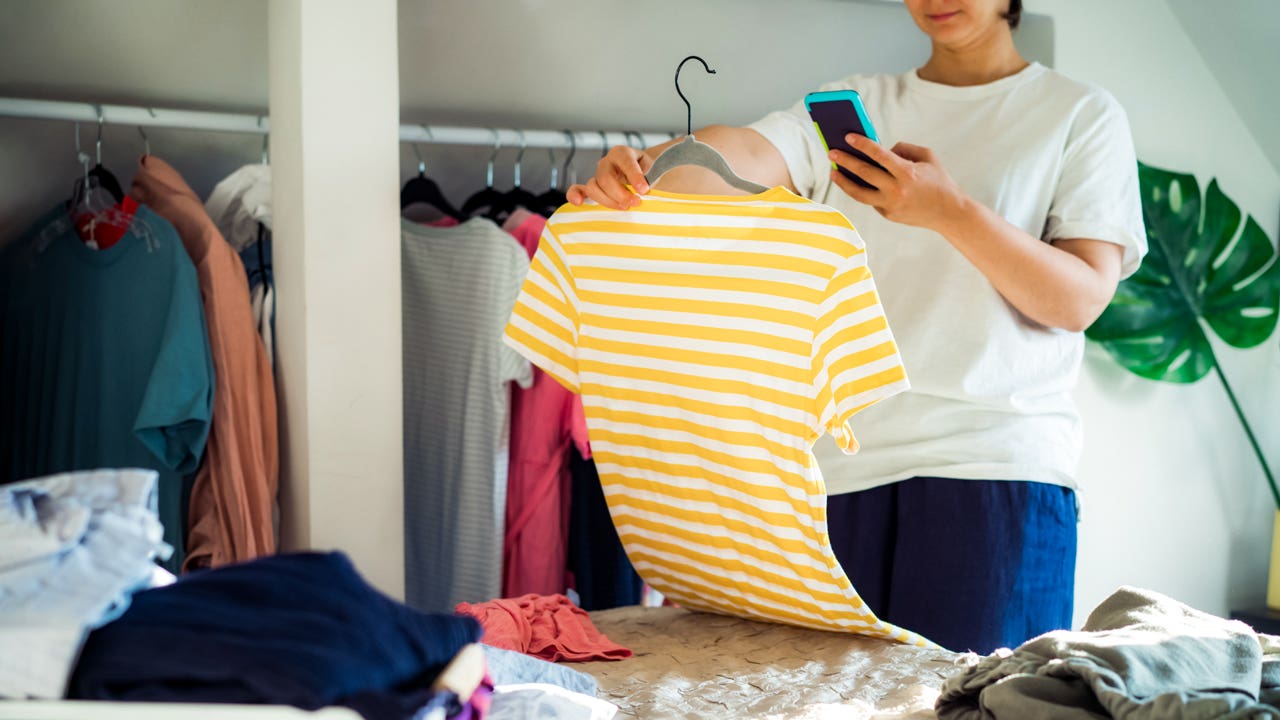Best marketplaces to sell things online and make money




Key takeaways
- An online marketplace is a type of website or app where people go to buy and sell items, both new and used.
- Selling used items online can be an easy way to make extra money to boost your savings.
If you’re looking to make extra money — while also clearing up some clutter — an online marketplace can be a good place to sell your stuff. However, you want to understand the nuances of each online marketplace to determine which is the best place to sell your items.
An online marketplace is a type of website or app where third parties can sell their goods or services. Most online marketplaces are designed for consumers to buy and sell each other’s stuff, and many are predominantly for secondhand items. Selling used items is a way to make extra money to increase your savings account. Plus, selling secondhand can have a positive environmental impact.
It’s also important to be cautious and safe, both with your personal safety and your money. Facebook offers seller tips, including how to avoid scams and if meeting in person, meet in a public, well-lit area and let a family member or friend know your meeting plan. Many police stations also act as “safe zones” for a designated meeting spot if you have to meet in person locally.
Best online marketplaces to sell your stuff
Amazon
What started as an online bookseller now offers more than 300 million items deliverable to your doorstep, plus an array of other ventures under the Amazon umbrella, such as music, movies and groceries. Although the site is not geared toward smaller sellers, those seeking to scale up and get exposure to a worldwide audience will find just that on a massive scale.
Selling on Amazon requires a subscription plan, with two options: a per-item charge or a flat monthly fee. Sellers can use the free Amazon Seller App to manage their listings, upload images and handle inventory and complete the sale. Since Amazon is one of the world’s largest marketplaces, they offer plenty of resources on how to get started as a seller, including access to their Seller University to teach you the tools of the trade.
Fees: An individual subscription sales plan, which accommodates 40 sales or less per month will cost you $0.99 per sale. The Professional selling plan is $39.99 per month, regardless of how many items you sell. Amazon also charges a referral fee for each item sold and there are other potential costs for certain items, as well as for tools and programs for selling.
Etsy
If Amazon is designed to move mass merchandise, Etsy swings the pendulum in the opposite direction. The site is designed for independent creators, focusing on handmade products, vintage items and artwork. Etsy had approximately 96.7 million active buyers at the end of Q3 2024, the most recent data available, exposing you to a wide audience when you make a listing.
Once you make an Etsy account, you can open a “shop,” where all of your listed items are featured on a web page. Each item is listed at a set price by the seller. Etsy offers a number of helpful tools for sellers, including many helpful articles on how to be successful with the site.
Sellers also have the option to connect their Etsy profile to a Square account, so that they may sell in person and have those sales reflected in their online inventory.
Fees: 20 cents per item listing fee, a transaction fee, a payment processing fee, an off-site ads see and a one-time set-up fee depending on shop size
eBay
eBay is one of the most popular online marketplaces with over 133 million buyers worldwide. Like Etsy, eBay is a global marketplace — its services are available in over 190 countries.
There are categories for everything from electronics to clothing to sporting goods. There are two ways to sell items on eBay: “Auction” or “Buy It Now.” With the auction option, sellers set a minimum price, and buyers bid for the highest offering before a set deadline. Items listed as “Buy It Now” have a fixed price set by the seller.
When it comes to pricing items, eBay helps sellers by offering price recommendations based on similar items sold. Sellers can ship items using eBay’s provided delivery labels, and they also have the option to offer local pickup if the item is sold locally.
Fees: There are two fees: an insertion fee when you list an item and a final value fee when you sell an item — both vary by product type and selling price. Those fees are calculated as a percentage of the total amount of the sale, plus a per-order fee. For orders $10 or less the per order fee is 30 cents, for orders over $10, the per-order fee is 40 cents.
Poshmark
Poshmark is primarily for buying and selling clothing and accessories. The site has over 130 million registered users across the U.S. and Canada.
As a seller on Poshmark, you set the prices for your own listings. However, buyers also have the option to make an offer on a listed item, which the seller can accept or decline. This is useful if you’re having trouble selling items at their listed price — buyers can negotiate a price with you. Buyers in the U.S. also have the option to pay in installments through the payment service Affirm.
Poshmark offers a unique social component, giving sellers an opportunity to gain followers: Every listing has buttons for customers to like, comment and share. When an item is shared, it shows up on followers’ feeds. Having the share option is another way for sellers to promote their items.
Fees: No listing fees but there are fees when an item sells: $2.95 for sales under $15,; 20 percent for sales of $15 or more
Depop
Depop, a subsidiary of Etsy, is another online marketplace for exchanging clothing, with an emphasis on vintage, streetwear, one-of-a-kind and Y2K fashions.
When you sell on Depop, you create a profile that acts as your shop. You need a verified PayPal account to sell on Depop.
Fees: There’s a payment processing fee of 3.3 percent of the total sale price including taxes and shipping, plus 45 cents.
Facebook Marketplace
Anyone with a Facebook account can use Facebook Marketplace. Because the marketplace is connected to the Facebook network, users can communicate with each other using Messenger, whether it’s to negotiate a price or ask about specific details of an item. The marketplace is also open to both individuals and businesses. This means that anything from old clothes and textbooks to cars and real estate can be found on Facebook Marketplace.
When sellers list an item, they have the option to set a firm price or list it as “Or Best Offer,” which indicates that customers can offer a lower price than what’s posted. Sellers can also choose to sell only locally, with pickup or drop-off options.
Fees: 10 percent of the total amount of sales over $8, or a flat fee of 80 cents for products costing $8.00 or less
Nextdoor
Nextdoor’s focus is on hyperlocal news, information and the exchange of goods and services. The site has over 95 million verified users across 11 countries and started out as a way for neighbors to connect with each other securely via private neighborhood networks.
Joining Nextdoor is free and so is selling items, although there are some restrictions. To join a Nextdoor neighborhood group, users have to verify they live within that community.
Selling on NextDoor is simple. Once logged in on a computer or mobile phone, you can click the “For Sale & Free” button and follow the prompts to do the rest. You can opt to use the AI assistant to write your description or choose your own words. You also have the option to select how wide of a network you want to see your listing from anyone to just nearby to just within your neighborhood group.
Fees: None, although you can earmark a portion of your selling fee to an eligible charity.
Craigslist
Craigslist started in 1995 as an online bulletin board highlighting events in the Bay Area. Like Nextdoor, the focus is hyperlocal, with Craigslist postings aimed at those within a certain metro area. There are local Craigslists in all 50 states along with several international locations.
Unlike Nextdoor, there’s no membership or login required to view postings, although there is a fee to list items for sale. Someone looking to do high volume sales can set up a “dealer” site, typically used for vehicles, motorcycles, boats and RVs, can set up a paid account to transact business. Individual sellers just have to pay a nominal one-time listing fee.
Fees: A one-time listing fee between $0 and $5 depending on what you’re selling. The listing fee to sell items is under $10 and can be up to $10 for a gig and up to $75 for a job listing.
Swappa
If you’re looking to sell an old mobile phone or other personal electronic device, Swappa can be a good place to do it. Swappa is an online marketplace based in the U.S. and designed specifically for users to exchange technology that’s new or gently used. Its listings include phones, laptops, watches, cameras, video games and more.
Swappa vets all of its products with certain photo verification requirements — this prevents anyone from selling broken items on the site. In the event that a user has an item that needs repairs, they can connect with the Swappa Repair Network, a directory of thousands of repair shops across the country. Sellers can ship nationwide or select Swappa Local Delivery, a next-day local delivery service for around a $10 fee (Local buyers pay the rest of the shipping cost – usually around $10).
All sellers must have a PayPal account to list items since this is how payments are processed on the marketplace. Swappa also partners with Zip to offer a “Buy Now, Pay Later” option on listings.
Fees: Listing is free but sellers pay a 3 percent fee of the total amount when an item is sold plus a payment processing fee. Buyers also pay a 3 percent fee, plus any taxes on the items.
Why sell your stuff online?
Selling your stuff online is convenient and environmentally friendly. Popular online marketplaces have audiences that are much larger in scale than places where you can sell stuff in person. With an online marketplace, anyone in a certain area, country or even the world can search for an item they’re looking for and find your listing.
Selling secondhand is a great way to be more eco-friendly, too. The Environmental Protection Agency estimated that 17 million tons of clothing and textiles were dumped into landfills in 2018. Reusing and recycling used clothing and other products limits the production of new items (and therefore carbon emissions) and reduces waste.
Finally, online marketplaces are generally considered a safe way to make transactions. You don’t have to meet the buyer in person, and transactions are sometimes mediated by the site (depending the site). The marketplace will almost always come with some guardrails for processing transactions, including seller protection, tax calculation and customer service.
Tips to increase your online sales
- Use relevant keywords in your listing. Make sure to include clear and descriptive words in your listing so that your item can be found by someone searching for what you’re selling.
- Take high-quality photos of your item. Be sure to take clear and well-lit photos against a neutral background so potential buyers are clear on what they’ll get.
- Price competitively. It’s worth researching what others are selling the same and or similar items for to make sure you aren’t overpricing or selling something for less than the market says it’s worth.
- Respond quickly to questions. Be as prompt as you can if an interested party has a question about what you’re selling. Otherwise, they might move on and purchase elsewhere.
- Share across social media platforms. To increase the reach of your posting, consider sharing your listing across any other social media channels you belong to, like Facebook, Instagram or X.
How to avoid online scammers
While online marketplaces may offer strong seller protections, that doesn’t completely eliminate the possibility of getting scammed. Scammers may sometimes pose as buyers and send a fake payment notification or send a fake overpayment check, and it’s important to look out for suspicious buying activity.
Usually, scams involve a scammer coercing the seller into sending the scammer money as a refund. For example, a scammer might claim that they accidentally paid for an item twice, then ask the seller to refund one of the payments — when in reality, the payments sent were faked.
The Federal Trade Commission offers three tips for avoiding online scams:
- Don’t accept mobile payments (such as Venmo payments) from someone you don’t know.
- If someone pays with a check, never deposit a check that amounts to more than the selling price. This could be a fake overpayment check.
- Don’t share any verification codes with someone you don’t know.
If you suspect that you’ve been scammed, report it to ReportFraud.ftc.gov.
You may also like

Sell your home fast in Atlanta

7 ways to save money on home maintenance

7 of the best passive income investments

